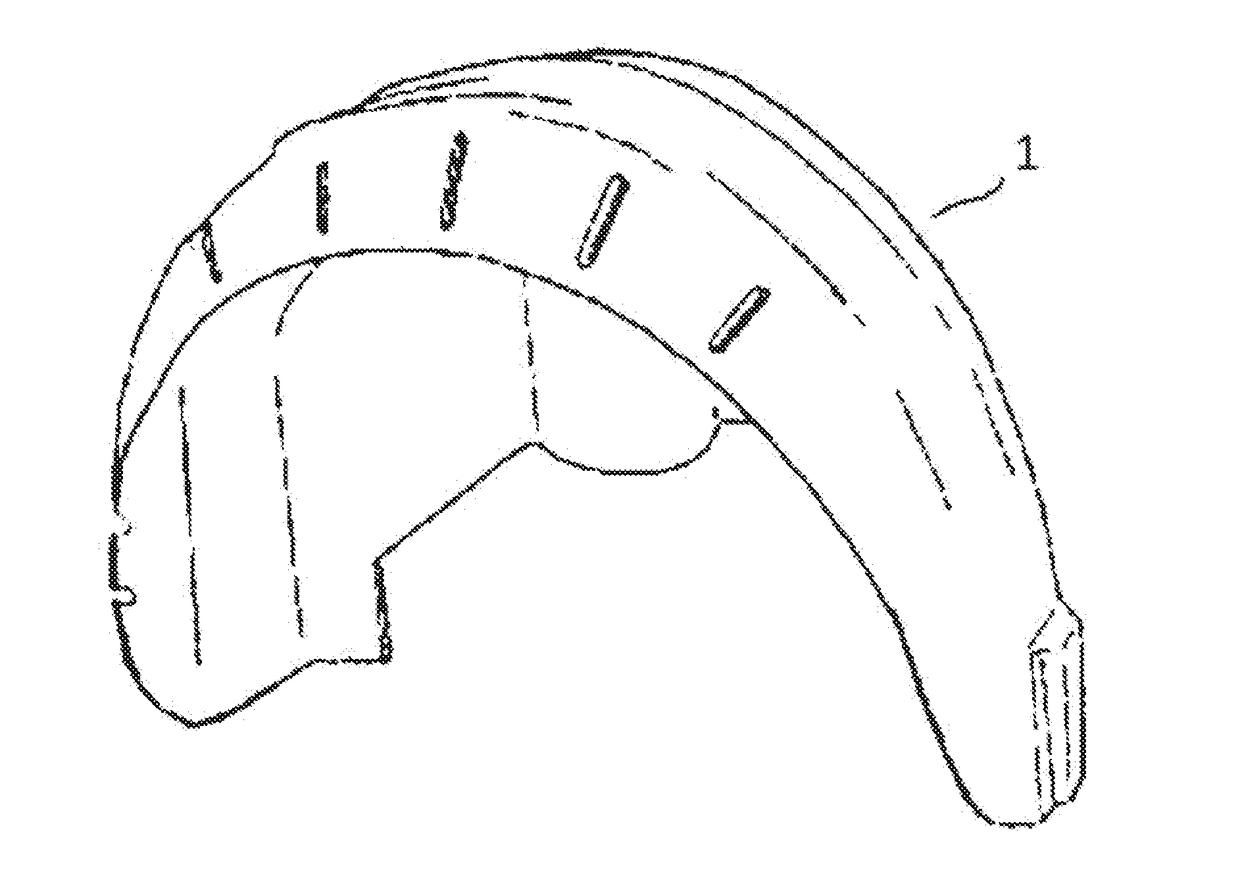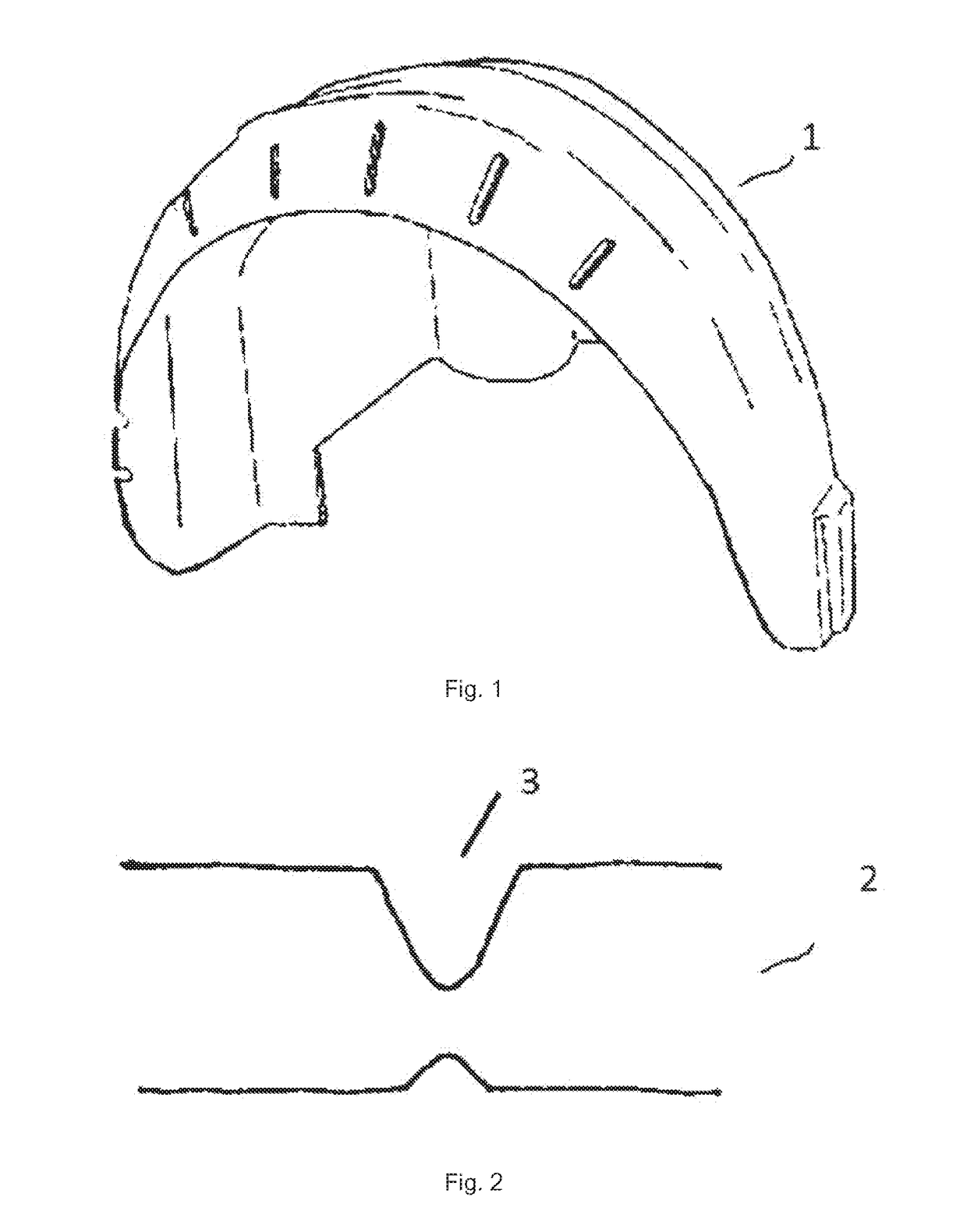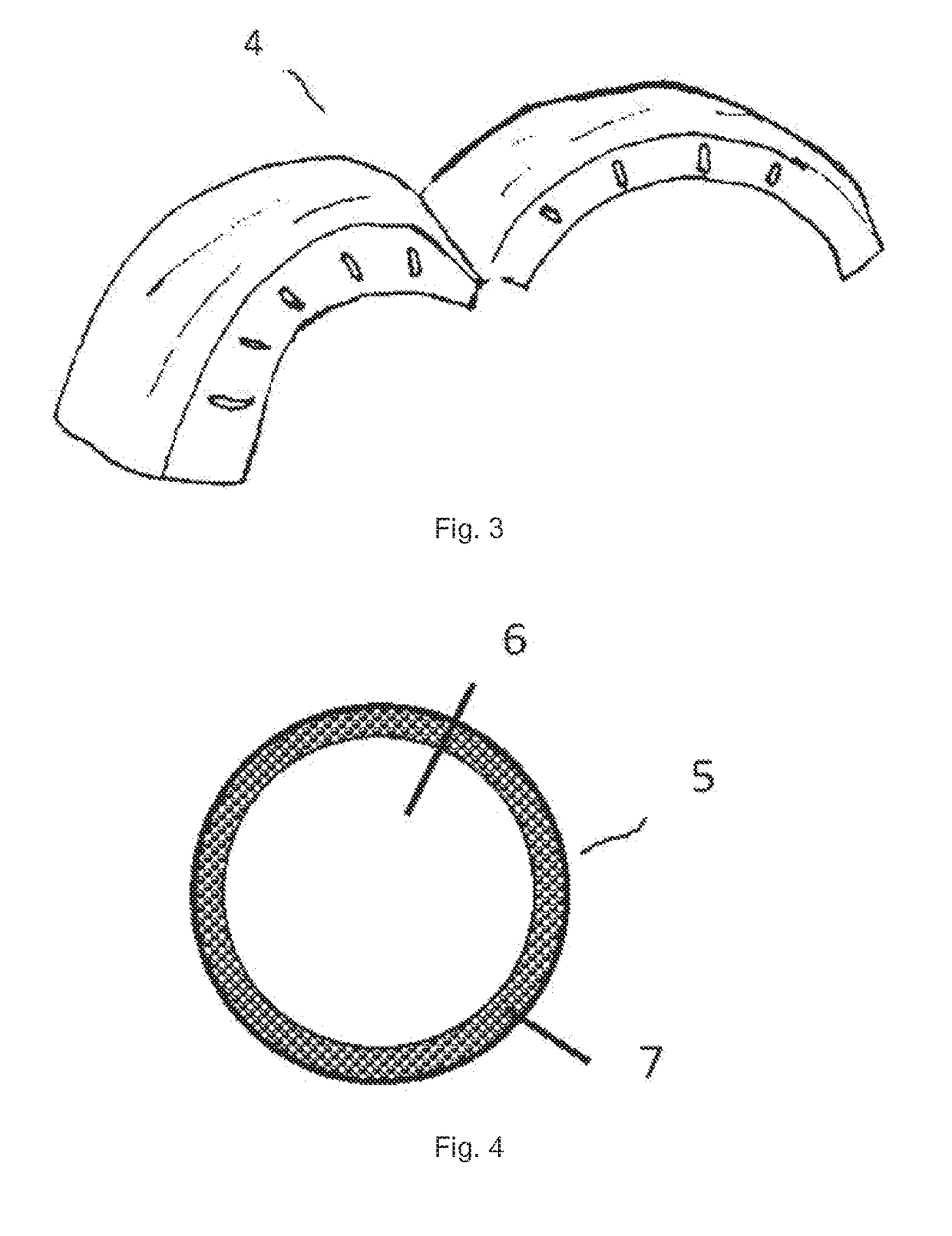Wheel arch liner for a vehicle
a technology for a vehicle and a wheel arch is applied in the field of wheel arch liners for a vehicle, which can solve the problems of increasing the weight of the vehicle during use, adding complexity to the production process and cost of the final product, and reducing the useful so as to improve the beneficial effect improve the distribution of the repellent additive. , the effect of enhancing the water repellent
- Summary
- Abstract
- Description
- Claims
- Application Information
AI Technical Summary
Benefits of technology
Problems solved by technology
Method used
Image
Examples
Embodiment Construction
[0045]FIG. 1 shows a picture of a wheel arch liner
[0046]Outer wheel arch liners according to the invention was produced using bicomponent filaments, where the core of the filament was made of polyester and the sheath was made of copolymer of polyester mixed with a repellent fluorinated additive. The ratio of the sheath was 30 wt % and the core was 70 wt %. The area weight was 1000 g·m−2.
[0047]The fibrous layer were compressed and consolidated to a thickness of about 4 mm.
[0048]Examples consolidated fibrous layers with an area weight of 1000 g / m2 were made from CoPET / PET sheath-core bicomponent filaments with a copolymer of PET as the sheath and PET as the core. The weight ratio of sheath to core was 30 to 70. The reference sample had no additive added, while example 1 had 0.17% repellent additive according to the invention added, and example 2 had 0.25% of repellent additive according to the invention added (as weight percentage of the final consolidated fibrous layer).
[0049]The sur...
PUM
| Property | Measurement | Unit |
|---|---|---|
| thickness | aaaaa | aaaaa |
| thickness | aaaaa | aaaaa |
| thickness | aaaaa | aaaaa |
Abstract
Description
Claims
Application Information
 Login to View More
Login to View More - R&D
- Intellectual Property
- Life Sciences
- Materials
- Tech Scout
- Unparalleled Data Quality
- Higher Quality Content
- 60% Fewer Hallucinations
Browse by: Latest US Patents, China's latest patents, Technical Efficacy Thesaurus, Application Domain, Technology Topic, Popular Technical Reports.
© 2025 PatSnap. All rights reserved.Legal|Privacy policy|Modern Slavery Act Transparency Statement|Sitemap|About US| Contact US: help@patsnap.com



